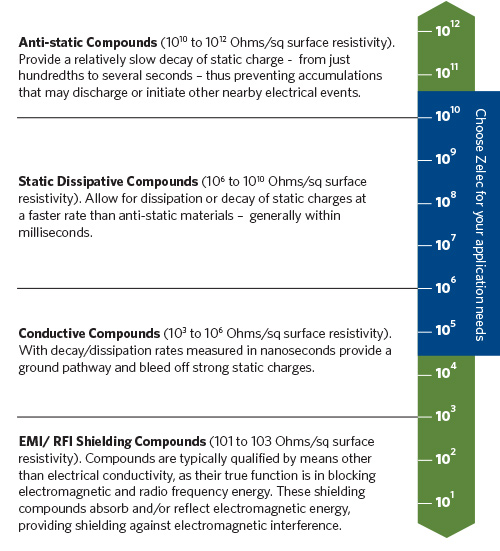What is ‘surface resistivity’?
For an electric current flowing across a surface, surface resistivity is defined as the ratio of direct current (DC) voltage drop per unit length to the surface current per width. It can be described as the resistance between two opposite sides of a square and is independent of the size of the square or its dimensional units. Surface resistivity is expressed in ohms per square, and operates over several ranges, as illustrated. Zelec™ ECP is effective over a broad spectrum of surface resistivity in electrostatic discharge (ESD) coatings and polymers.


The Zelec range consists of a series of specially-developed powders to suit different applications. It allows manufacturers to optimize loading efficiency while achieving the ideal surface resistivity for their product.
